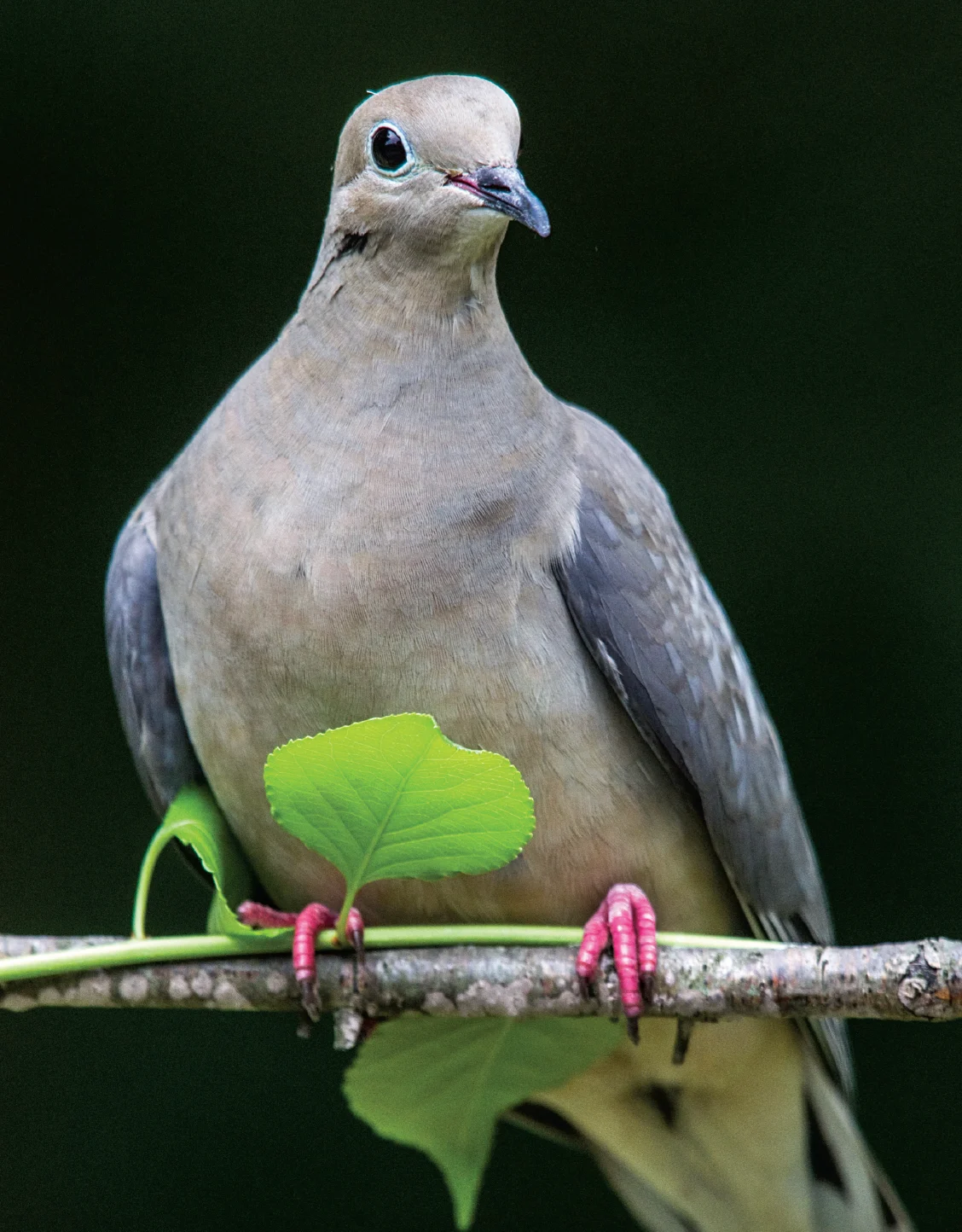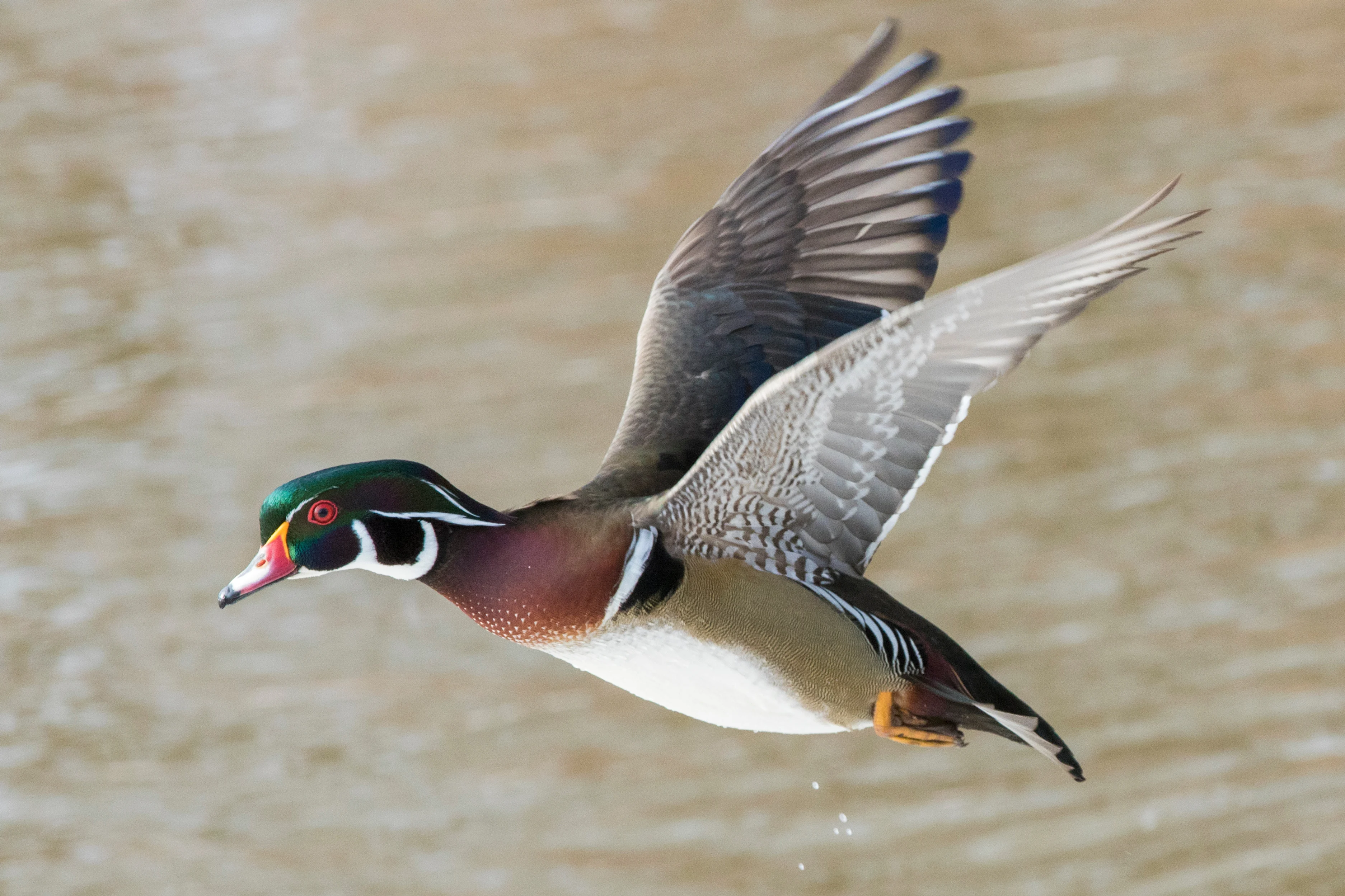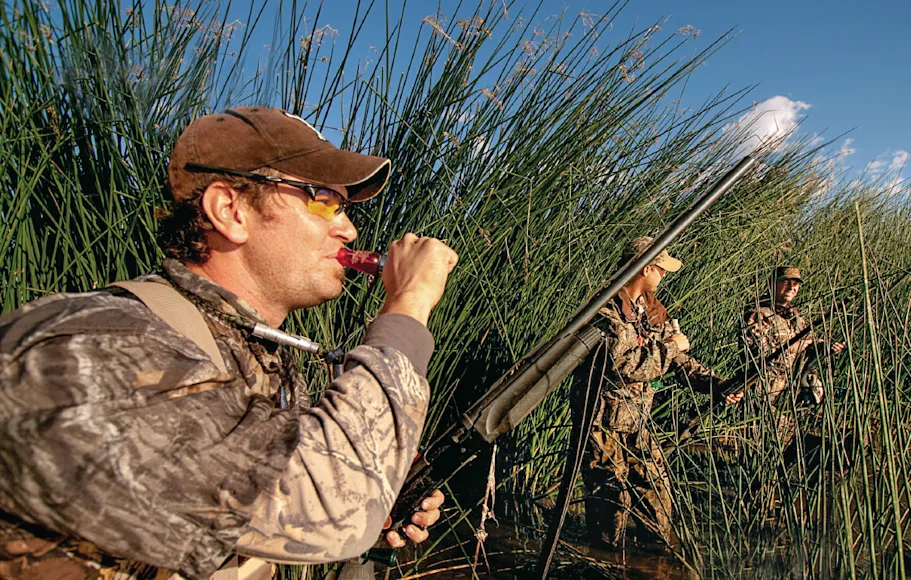
The Healing Hunt
There are times when the best medicine is a day in the field with an old friend and a good dog
I didn’t fully understand until later. Not until the day was done, and I was leaning against the truck and waiting for Tommy to walk out of the dove field. It had been a rainy, nasty, post-hurricane dove opener. When I picked up Tommy Krisulewczs at his house, we both felt it. The storm was scrambling our plans. No one would spend the night at Stillwater. There would be no late night by the bonfire, no big feed with Greg’s funky white Alabama barbecue sauce, and no caravan of trucks storming the field at dawn. There would be none of the pageantry and community that typically marks our opening-day dove hunt.
But I haven’t missed a dove opener since 1980, when I went home with a college buddy over Labor Day weekend and shot my first dove. That bird spiraled down into cut corn and red clay mud, and there was laughter all around the field and a pig picking afterward. It was the first time I’d ever hunted in a big group. In the years since, I’ve hunted opening day when I had nowhere else to go but crowded public fields, and I’ve hunted when “hunting” meant pulling a pickup truck into a borrow pit and sniping doves as they flew in to pick grit. I never miss opening day. So it was just me and Tommy and my little Lab, Minnie, driving east in a hard, gray rain.
The storm wasn’t the only thing that had fouled my mood. Work was a mess. I was behind on deadlines, juggling projects as all the balls fell at once. It didn’t help that it was my first opening-day hunt in a decade without my son, Jack, who was away at his freshman year in college. There are times when you just feel sorry for yourself. I had worked till nearly midnight on Friday night and was staring at a laptop at 6:45 A.M. on opening-day morning. I opened the refrigerator for cereal milk, and the duck breasts and wild pig loin I’d planned to cook at the club were dull lumps on a plate. Outside, the rain pounded.
Tommy’s phone call had been a pinprick of light. Hell or high water, he was hunting too. On the drive to the dove field, he told me that he’d just returned from three days at the Mayo Clinic in Minnesota—his third round in the ring with prostate cancer. I told him I was sorry, that I hadn’t known. He said he needed a day under the sky, rain or no rain, and the smell of gunpowder and fresh dirt.
For the first time in days, I felt a little lucky: Minutes from the sunflower field, the rain tailed off to a mist. By the time we pulled the guns from the cases, the sky was clearing. The storm had passed. Minnie bounded ahead, so excited that she ran with a stilted, bow-legged gait, pissing on the run.
In a field turned sweltering and steamy, the birds went crazy. Bottled up through 36 hours of hurricane slop, they rained into the sunflowers low and fast. The shooting was stupid. Minnie held steady with each downed bird, flanks tremoring with anticipation before vaulting through the field.
On my 5-gallon bucket, I thought about that little dog and all our mornings together, and how lucky I was to have my farmer friend, Robert, who let us have his dove field after the club hunt fell through. I thought about the way a dove hunter can recognize a dove in flight a quarter mile away by its arrowed trajectory and the long tail feathers and stout chest that you sense almost subconsciously. I thought about Jack at his first college football game as a student. Slowly, like clouds breaking, I began to understand how wonderful it all was.
Across the field, Tommy whooped with every bird he shot. There was no ring of triumph in his shouts. Each sounded like a cry of gratitude, hurled to the sky for the gift of this day.
Minnie picked up 14 of my 15 birds. We walked back to the truck, and I leaned against the tailgate as she rolled in a cow pie, and I swear I heard my own voice: Remember this. Remember what it feels like to lose yourself in the moment of the hunt, in the healing power of something that requires all of yourself—mind, body, spirit. I thought of how Tommy hadn’t whooped in the last few minutes, and how I bet he’d limited out too. I thought of how I hadn’t fussed about work for one single second. Remember what you never thought about.
As I watched Tommy make his way through the sunflowers, my phone beeped. A text came in, a last benediction. “Happy opening day, Pops.” —T. Edward Nickens
Line up for Teal

Buzzing mosquitoes, the smell of repellent barely keeping them at bay, and you and your fellow diehards aching to take the first shots of the year. Welcome to opening day of the September teal season. Migrating flocks of these speedsters can number more than 100 birds, which makes it the perfect hunt to share with a bunch of friends.
All you need is a few dozen decoys, some portable marsh seats, and a couple of spinning-wing enticers. Set up in a line along the east side of a shallow-water impoundment levee, using natural cover to hide. Then spread the decoys down that line, leaving plenty of space between them. Teal decoys are ideal but not necessary, because the birds will decoy to any puddleduck species. Place a pair of spinners in the middle of the spread. Ideally, birds will finish near the center, and everyone will get some shooting when they disperse after the first shots. But if one side of the line proves hotter, just switch it up.
And remember to pick out one bird. It’s all too easy to flock-shoot teal as groups bomb in low and fast. This is a great hunt for small-gauge guns too, because quick-handling 20- and 28-gauges add to the fun. —John Gordon

Tag an Early Season Whitetail with Your Bow
Many archery deer seasons in the South don’t open until late September or even the first of October, and by then your best chance of killing the bruiser that you’ve scouted all summer is often to stay out of his core area until closer to the whitetail deer rut. But it’s deer season, and any hunter worth his salt lick will be sweating his butt off in a tree somewhere.
This is my favorite time of year to lay off my best spots and freelance public land and new farms with a climber on my back. It’s the way I learned to bowhunt deer as a kid, and to this day, slipping into an unfamiliar area and killing an opening-week deer with nary a trail camera in sight is rewarding in an old-school kind of way.
1. Start Simple
There’s much ado about changing food sources in September and October, but that’s a moot point when you’re hunting a new spot. The deer haven’t disappeared, so your first step is simply to find them. No need to overthink it. Start at midday someplace where a good food source—a beanfield, picked corn, or a cutover—meets a swath of timber. Go ahead and scout the edges of the food, but don’t be afraid to get into the woods. That’s where the deer are hiding and where you need to be looking for them.
2. Take a Walk
Follow any major trails you find into the timber, but don’t stop at the first straight tree you find. You’re now searching for the hottest sign. Tracks are good, and an early rub line is even better. But multiple piles of fresh droppings are best, because they indicate that deer are returning to and lingering in the area.
3. Get Close
Finally, you need to find something that puts deer within bow range. It might be an isolated secondary food source—like a specific white oak or fruit tree—or a hidden water hole, creek crossing, terrain funnel, or other pinch point. One of the best funnels I’ve found is a canebrake along a creek or field. Deer often won’t cross the thicket, which steers them around the end. Keep your search within 500 yards of the main food source, but check plenty of potential areas before committing to a climb. When you do find the spot that puts everything together, get set up and keep your bow in hand starting about an hour before dark. —W.B.
Dupe Wood Ducks with a Dove

Wood ducks don’t play fair. They will ignore your calls and decoys. They’ll rocket overhead in the first nanoseconds of legal light and storm into the far side of the swamp just beyond your shotgun’s reach. One thing they can’t resist, however, especially in the first days of the season, is a small spinning-wing decoy. Instead of a full-size duck deke, though, woo them with a dove spinner. These are compact and light enough to carry deep into the beaver swamps where woodies hang out in droves. These fakes are also small enough so that the pint-size flash won’t flare wary ducks.
Use a black PVC pipe to raise the spinner above the water. Cut it on a 45-degree angle on the bottom so it’s easier to drive firmly into the muck. And be strategic about the decoy’s location. If you place a spinner directly in front of you, the birds will buzz straight in on a low beeline, beneath the dark horizon, making for a difficult shot. Instead, set the spinner to the side for a crossing shot, and tuck it into trees or vegetation somewhat so that the flash of the wings is only intermittently seen by flying fowl. And be ready. Squealers rarely circle and return, so pull the trigger the first chance you get. —T.E.N.
Opening Day Tradition: Sweet Memory
For years I hunted the dove season opener in Lexington, North Carolina, with a bunch of pals. This was my introduction to dove hunting, and it was a classic Southern throwdown: crowds in the fields, little kids running around, some of the worst dogs I’ve ever met, and time split between shooting the birds and chewing the fat with other hunters.
After the shoot, we all gathered for a huge cookout at R.B. Smith’s farm, where we dumped our doves into vats of simmering barbecue dip. Things changed from year to year—the weather, who could make it, how much corn was cut in the field. But there was one constant: The meal always ended with massive platters of homemade banana pudding. Banana puddings so large, you could land a tundra plane in the meringue topping. Hunters would shoulder their way around those platters and the day’s down-South good manners went out the window. Folks didn’t think twice about loading up with a double serving, even if it meant your buddy at the end of the line wouldn’t get enough to wet a spoon. I haven’t been to that opening-day hunt in 30 years, but if I smell banana pudding at any barbecue joint in the South, I’m suddenly back in those rolling red-clay corn rows, sweat in my eyes, doves in the sky. It’s a recollection I cherish, and one of those sense-memory associations I treasure. Funny thing is: I can’t stand banana pudding. —T.E.N.



